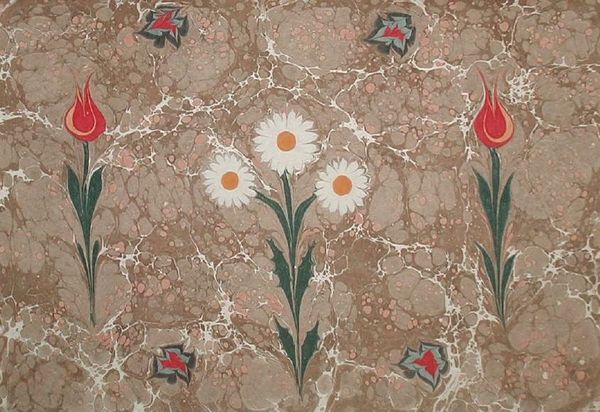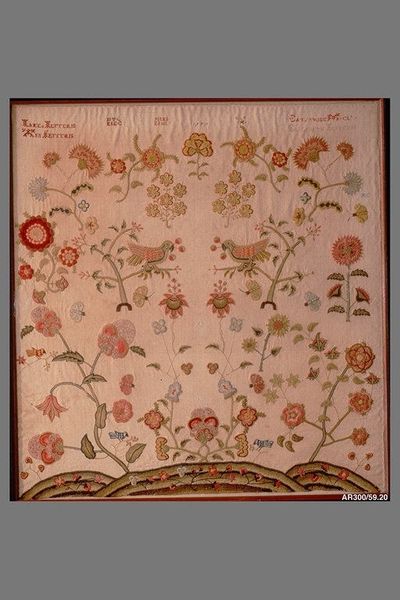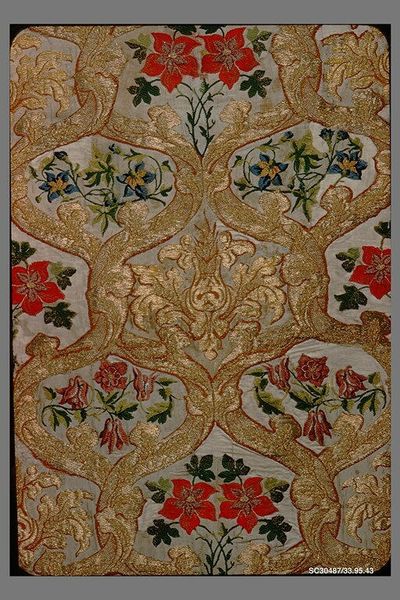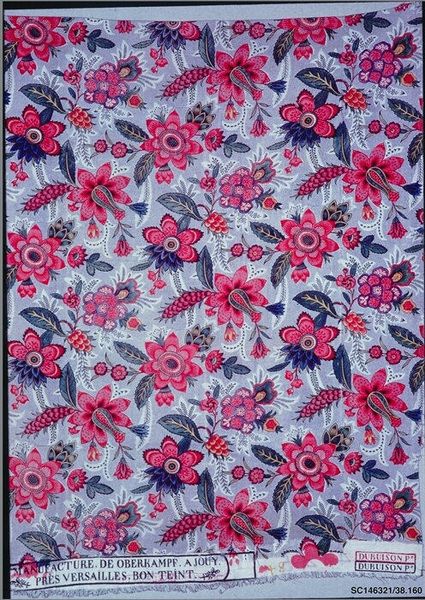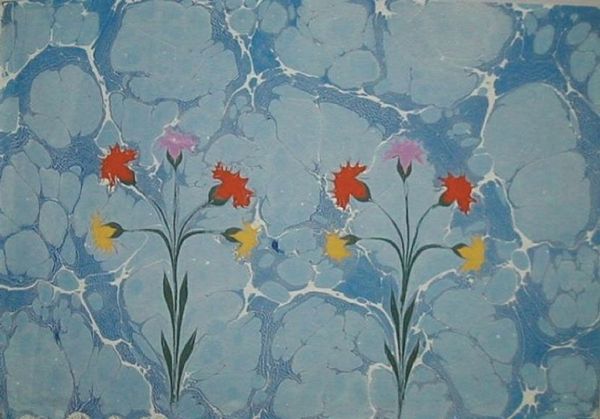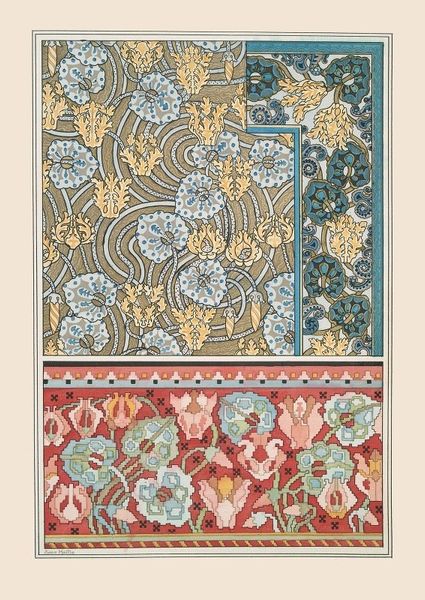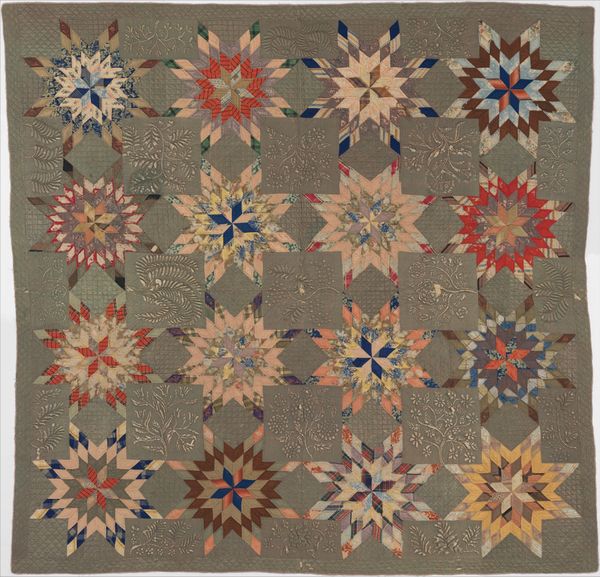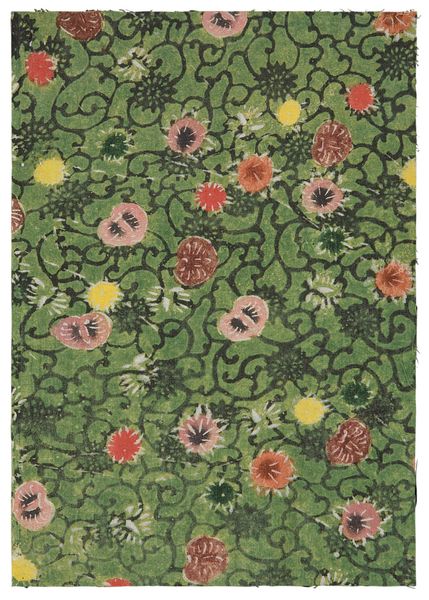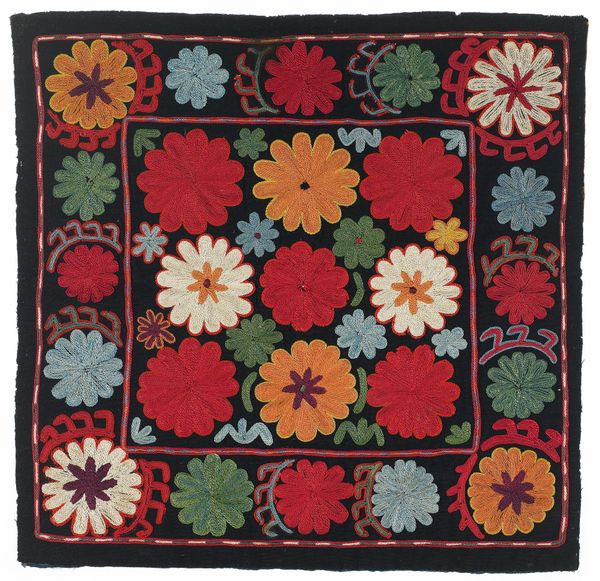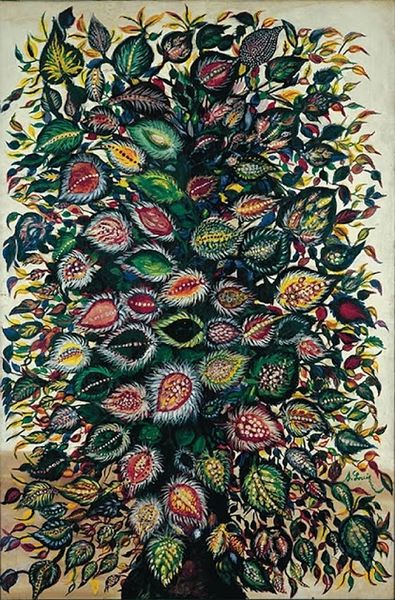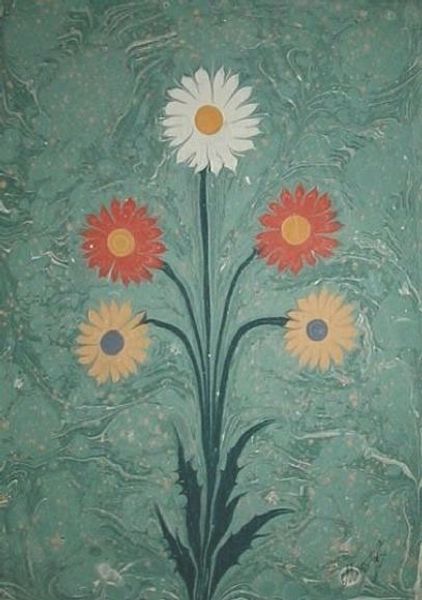
drawing, textile
#
drawing
#
organic
#
landscape
#
textile
#
folk-art
#
organic pattern
#
flower pattern
#
decorative-art
Dimensions: 94.9 × 84.9 cm (37 × 33 3/8 in.)
Copyright: Public Domain
Curator: Mary Toppin created this gorgeous textile, called "Table Topper", around 1760. It resides here at The Art Institute of Chicago. What are your initial thoughts? Editor: I am struck by the whimsical nature of the embroidery! The density of floral motifs creates a unique texture, and it makes the object glow! Curator: Considering Toppin’s identity and social position, this work serves as a poignant representation of domestic craft as an act of female expression in the 18th century. The decorative arts were often a key site for women’s artistic and political agency, subtly challenging prevailing social norms. Editor: I can definitely see how each meticulously crafted stitch functions as a visual signifier—communicating through form, color, and repetition! These floral elements function as visual signifiers contributing to the work's semiotic vocabulary. The central large flower, for instance, may be interpreted as a potent symbol of femininity or fertility. Curator: Exactly, and beyond the aesthetic, textiles such as this functioned as key sites of material culture. The act of creation provided women like Toppin with an important avenue for social interaction and the transmission of cultural knowledge. The "Table Topper" signifies much more than domesticity; it embodies connection and knowledge. Editor: True! When viewing textiles, you see the artist’s decision to emphasize particular motifs as it guides our perception, leading to a greater understanding of artistic intent and, I would also say, of an expression of a certain feminine experience during that historical moment. The vibrant blues and reds against the subtle white ground make me wonder if that specific choice held symbolic weight in the creator’s cultural lexicon. Curator: Certainly. Its enduring appeal allows us to appreciate both the artistry and historical relevance embedded within its fibers, resonating across different social, cultural, and temporal landscapes. Editor: Absolutely, and thinking formally it stands as an exquisite demonstration of the transformative potential inherent in art objects and techniques!
Comments
No comments
Be the first to comment and join the conversation on the ultimate creative platform.
